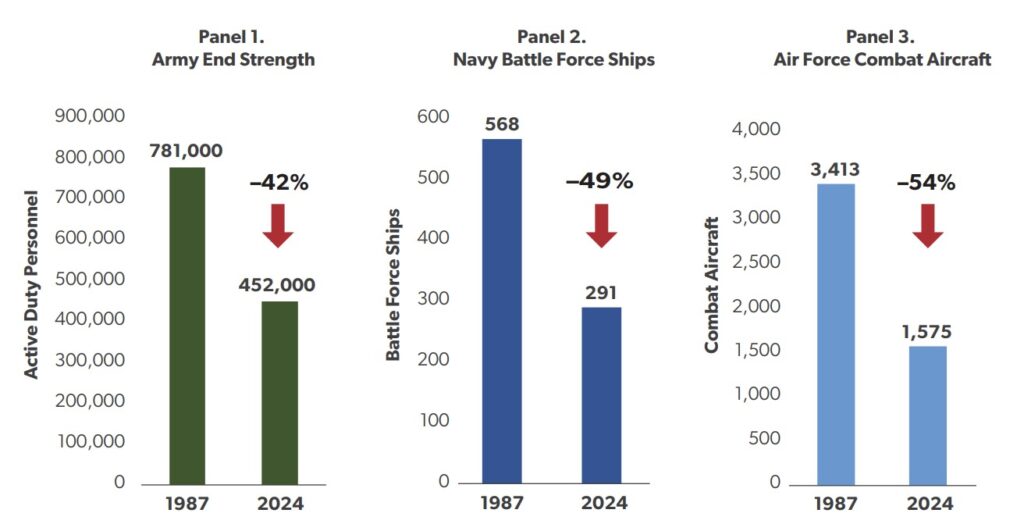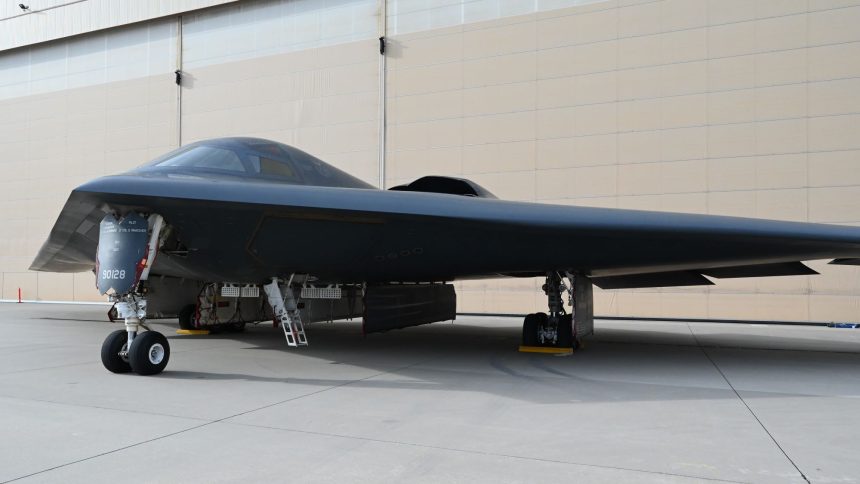5 Key Strategies to Revitalize Pentagon Efficiency Amid Rising Global Threats : As global tensions escalate and military readiness becomes paramount, the United States faces an urgent need to reform its defense apparatus.
The Department of Government Efficiency (DOGE), proposed under the incoming administration, aims to address systemic inefficiencies within the Pentagon. However, without real budgetary growth and strategic reforms, these efforts risk falling short. This article explores how Washington can ensure success in Pentagon reform by balancing strategy, resources, and reform.
Key Challenges Facing the U.S. Military
1. Shrinking Force Size and Aging Equipment

Decades of constrained budgets have left the U.S. military with fewer troops, outdated equipment, and mounting modernization bills. According to data from the Pentagon’s Office of the Under Secretary of Defense :
| BRANCH | 1987 LEVELS | 2024 LEVELS | PERCENTAGE DECLINE |
|---|---|---|---|
| Army End Strength | 781,000 | 452,000 | -42% |
| Navy Battle Ships | 568 | 341 | -49% |
| Air Force Combat Aircraft | 4,000 | 1,575 | -54% |
This decline has created a force that struggles to meet current operational demands while preparing for future conflicts.
2. Rising Costs of Deferred Modernization

The cost of maintaining aging equipment continues to rise as production lines close and spare parts become scarce. For example:
- The B-2 Spirit stealth bomber program was initially planned for 132 aircraft but was cut to just 20 due to post-Cold War budget constraints.
- Each B-2 now costs $1.38 billion, making it the most expensive plane ever produced.
Such decisions highlight the paradox of reform: cutting programs often increases per-unit costs, further straining limited budgets.
Strategic Recommendations for Pentagon Reform
To reverse decades of neglect and restore America’s military edge, policymakers must focus on three interdependent pillars: strategy , reform , and resources.
1. Strategy: Prioritizing Vital vs. Important Initiatives
Reforming Pentagon processes begins with ruthless prioritization. Key recommendations include:
- Eliminating redundant decision-making bureaucracies.
- Reforming geographically defined Combatant Commands (COCOMs) to better address China’s growing influence in the Indo-Pacific.
| CATEGORY | ACTION ITEMS |
|---|---|
| Strategy | Ruthlessly prioritize vital initiatives; equally emphasize deterrence, warfighting, and hybrid ops. |
| Reform | Reduce red tape; increase subject matter experts in business, engineering, and science roles. |
| Resources | Resurrect supplemental spending bills; pass comprehensive military infrastructure legislation. |
2. Reform: Cutting Waste Without Sacrificing Readiness
Efficiency gains require upfront investment. Historical examples demonstrate the long-term benefits of bold reforms:
- Base Realignment and Closure (BRAC): Though costly upfront ($21 billion), BRAC saved the Pentagon $12 billion annually once implemented.
- Initial Investment: $21 billion
- Annual Savings Post-Implementation: $12 billion
- Net Gain Over 10 Years: $99 billion
By rightsizing excess infrastructure—estimated at 19% of current facilities—the Pentagon could redirect funds toward critical priorities.
3. Resources: Investing in Long-Term Capabilities
Without sustained budgetary growth, meaningful reform remains elusive. Policymakers should consider splitting the defense budget into two categories:
| CATEGORY | EXAMPLES |
|---|---|
| Operations Expenses | Payroll, maintenance, munitions procurement |
| Capital Investments | New fighters, base construction, R&D |
This approach ensures transparency and aligns spending with long-term goals.
The Changing Military Balance in the Indo-Pacific
China’s rapid military buildup underscores the urgency of reform. Recent developments illustrate Beijing’s growing assertiveness:
| DATE | EVENT |
|---|---|
| September 11–17, 2024 | PLAN vessels join Russian navy exercises near Japan |
| September 25, 2024 | PLA Rocket Force launches ICBM from Hainan, hitting target 11,700 km away |
| October 15, 2024 | Joint Sword-2024B exercise surrounds Taiwan with 17 PLAN ships, 17 Coast Guard vessels, and 153 aircraft |
While China focuses nearly all its military power in the region, the U.S. must divide its forces across multiple theaters, creating a “tyranny of distance.”
Conclusion: A Call to Action

President-elect Donald Trump listens to Elon Musk as he arrives to watch SpaceX’s mega rocket Starship lift off for a test flight from Starbase in Boca Chica, Texas, Tuesday, Nov. 19, 2024. (Brandon Bell/Pool via AP)
The stakes could not be higher. Without immediate action, the shifting military balance risks undermining U.S. deterrence capabilities globally. To succeed, Washington must:
- Provide real and consistent budgetary increases to enable cost-saving reforms.
- Implement bold initiatives like BRAC and rightsizing excess infrastructure.
- Align strategy with resource allocation to confront rising threats effectively.
By embracing these measures, the DOGE initiative can revitalize America’s military and secure its position as a global leader.
Related articles
https://www.reuters.com/business/aerospace-defense/predator-drone-maker-asks-musks-doge-cut-pentagon-red-tape-letter-shows-2025-01-28
https://mgiedit.org/trumps-2025-tariff-surge-a-1-trillion-trade-war/

답글 남기기